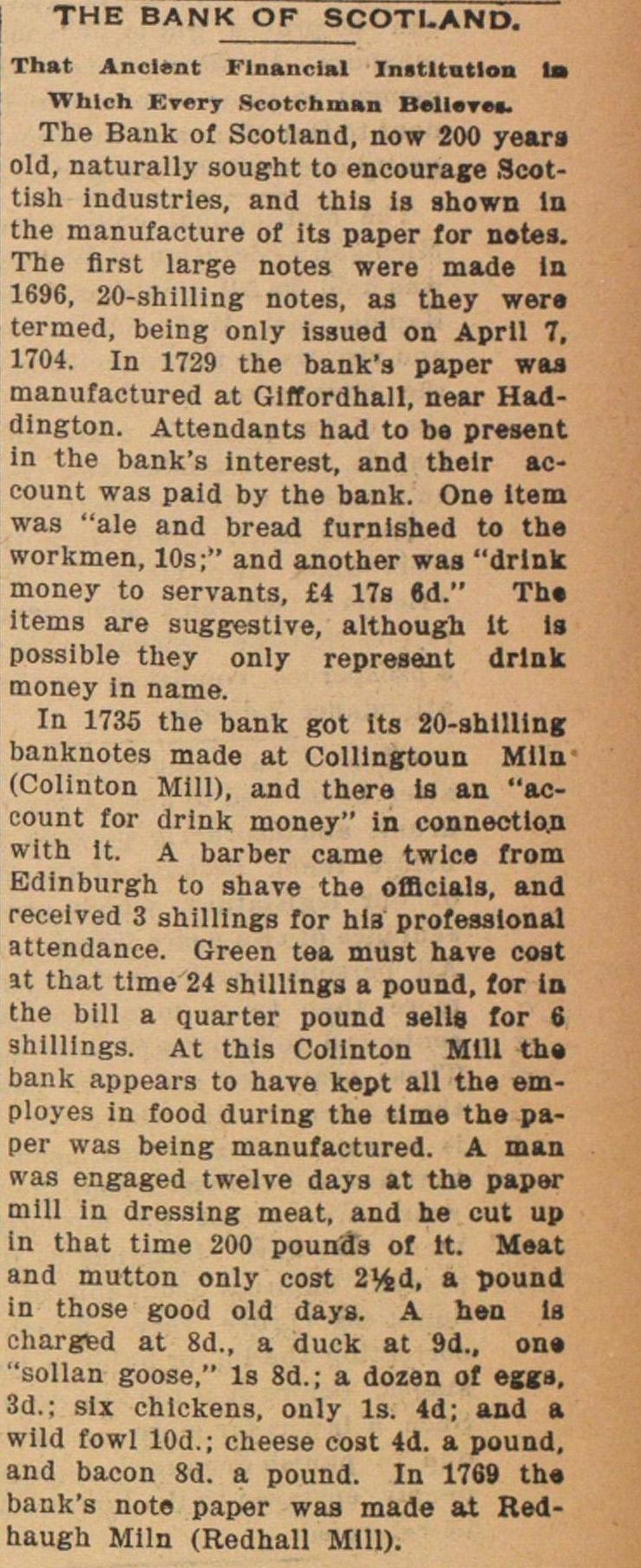The Bank Of Scotland

The Baak of Scotland, now 200 yeara old, naturally sought to encourage Scottish industries, and thls Is shown In the manufacture of lts paper for notes. The first large notes were made In 1696, 20-shilling notes, as they wera termed, being only issued on April 7, 1704. In 1729 the bank's paper was manufactured at Glffordhall, near Haddington. Attendants had to be present in the bank's interest, and their account was paid by the bank. One item was "ale and bread furnlshed to the workmen, 10s;" and another was "drink money to servants, L4 17s 6d." The Items are suggestive, althougü lt is possible they only represent drink money in name. In 173S the bank got lts 20-shtlUng; banknotes made at Collingtoun Mlln (Colinton Mili), and there ia an "account for drink money" in connectlo.n with it. A barber carne twlce from Etlinburgh to shave the officials, and recelved 3 shillings for hla professional attendance. Green tea must have coat at that time 24 shillings a pound, for la the bilí a quarter pound sells for 6 shillings. At this Colinton M1U tb. bank appears to have kept all the employés in food during the time the paper was belng manufactured. A man was engaged twelve days at the paper mili in dressing meat, and he cut up in that time 200 pounds of lt. Meat and mutton only cost 2V4d, a pound in those good old days. A hen Is chargtd at 8d., a duck at 9d.. on "solían goose," Is 8d.; a dozen of tt. 3d.: six chlckens, only Is. 4d; and a wild fowl 10d.; cheese cost 4d. a pound, and bacon 8d. a pound. In 1769 th bank's noto paper was made at Redhaugh Miln (Redhall MUI).
Article
Subjects
Old News
Ann Arbor Democrat